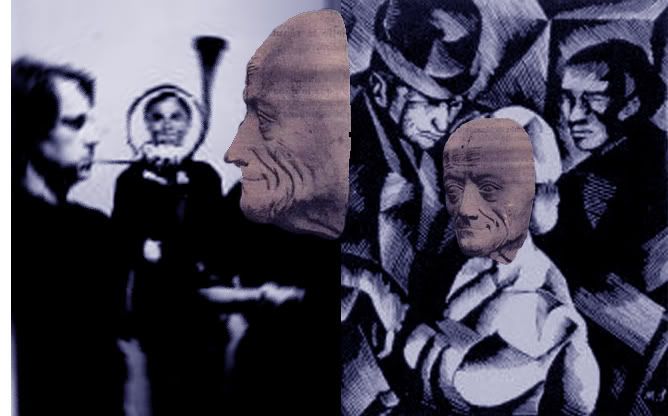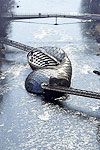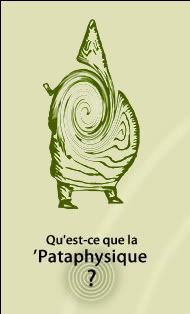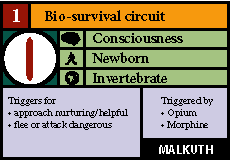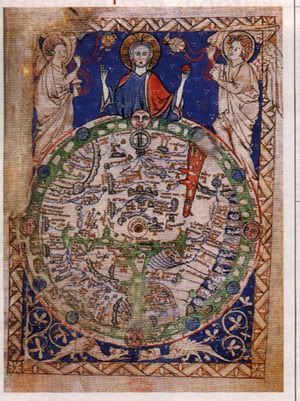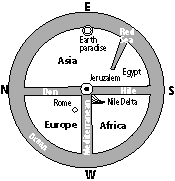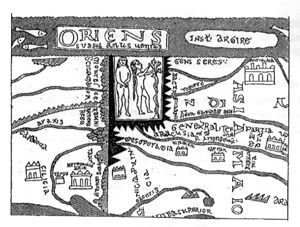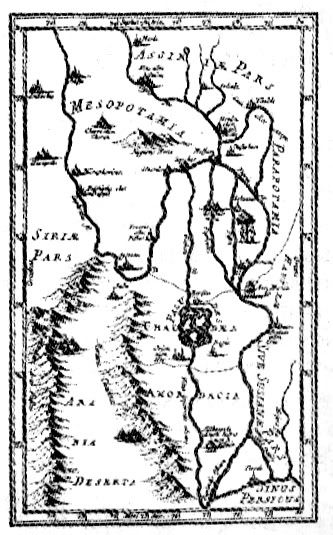Second part of pataphysical links, this time with sites centered around pataphysics.
001-03. Borderline 'pataphysics.
Patalinks
First of all I'd like to thank fellow Maybe Logic Academician Bogusmagus for his contribution on 'pataphysics on his website Personal Maybe
A site with many links for R. A. Wilson-related sites and more and more patalinks! There I found reference to a few of the websites below
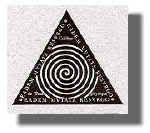
Ubuland shows a psychogeographical map of pataphysical organisations on the net. It's Italian, many links from the post about Colleges and Institutes on this blog come from here.

The best
Institute of Pataphysical studies
Now here's a beautiful Australian site with true undertones of the Science.
A musical study of Julio Cortazar's Hopscotch, organisation of almost discordian street performances (with fish), dada theatre shows (also with fish), a musical - "Asylum seekers Jesus, Buddha and Mouhammed flee religious persecution upon their mythical winged bike." (with fish again), a contraption to see and feel the dreams of a chicken… Their recent performance is called 'Ubu Republica'. 'Pataphysics is very much alive and well in Australia!

Patamania

Includes a blog, poetry, journalistic pieces and flashy photogalleries. Publishes an online magazine called 'The Pataphysical Dart-Face'. Which seems nice.

Le pataphysicien net
Which means 'the clean 'pataphysician'. In french. Includes an Oulipian exercise based on the human genome, a comparison between the '@'-sign (called 'arobase' in french) and the gidouille and many links.
Fatrazie
The mother of all site pataphysical. In French, very large collection of oulipian exercises, an accurate overview of the functioning of the college, biographies of many pataphysicians, a collection of transformed Mona Lisas, a lot of links… Excellent.

Les Harengères
15 pages about herrings. One of them about the herring in Finnegans Wake. Seems originated in the Netherlands, but written in French. Worth a look.
The Journal Of Pataphysical Reviews
Three issues. A Publication of the Society of Pataphysics.

Something completely different
I'll only mention these because of the word in their URL.
Pataphysics magazine
Not a lot to do with our subject, I guess the word sounded 'cool' or something. They seem to publish an arty-farty paper magazine with intellectual mumbo-jumbo. Or maybe not.
From the site: "Colliding science, ecology, architecture, publishing & social space, PATAPHYSICS contains interviews, photography, theory, art projects, fiction & questionnaires. Each issue has a particular theme: the Holiday Resort issue, an extended 'travel brochure' for a hypothetical resort; the Pirate issue, an intervention with copyright & piracy; the Tile issue, a collection of responses from artists, writers & theorists to an international questionnaire on autobiography and their current projects; the Psychomilitary issue, a fragmentary meditation on the psychological dimension of the defended citadel. Within these themes, differing printing processes combine high- & low-tech."

Pataphysics Research Laboratory
I my opinion nothing to do with our subject either. Just a fancy site with a fancy name. It seems a collection of 8 blogs where the most extended posting reaches two lines in telegramstyle. Some of those for people whose vocabulary consists mainly of a few substantives; I suppose (hope) these are chat transcripts. I did find a few good links though.

Virtual colleges
Faculté Uqacienne de 'Pataphysique
This site from Quebec hasn't been updated since 2001. Nice study of Ionesco's "The bald soprano' and a little study of the apostrophe before the word pataphysique…

Collège de Pataphysique Nautienne
These self-appointed optimates made up a virtual college on the website of the virtual french-speaking republic of Nautia. Good collection of texts in French.
Université de Napierville
Another virtual college. Reminds me of the Annals of Improbable Research, studying extreme subjects like the influence of continetal drift on the transportation costs, on the influence of the reading direction of book titles on the side on cervical damage, proof that King Tut was a lady etc.

Texts
Pataphysics - A Religion In The Making
An excellent situationist text by Asger Jorn linking the recent success of epi-meta-ta-fusica with the gnostic game. " Although the Americans have now claimed the honour of presenting Pataphysics to the world, they didn't dare mention the word religion in their journal. Nevertheless, the enormous success Pataphysics enjoyed last year among the New World intelligentsia has inaugurated an epoch in which the essentially religious nature of this phenomena will be carefully analysed. You'd have to have a cold to miss the stink its causing!"
Pataphysics of Year 2000
A seminal text by Satrape Jean Baudrillard."if we want immediate satisfaction (jouissance) from an event, if we want to live it in the moment as if we were already there, it is because we no longer have any trust in the meaning or purpose of the event. One can spot the same denial in apparently opposite attitudes - in the historicization, in the archiving, in the memorizing of everything related to our past as well as those appertaining to every other culture."
Le Polidor
A historical text by satrape Noël Arnaud about the beginnings of the Collège in this french brasserie-restaurant. According to Stefan Themerson James Joyce used to visit regularly.
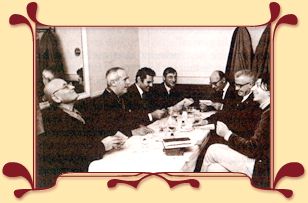
History of the Pataphysical Calendar
Read a bit more here about this universal calendar.
Pataphysical publishers
The Collège de 'Pataphysique publishes a thick french magazine every three of four months next to a big collection of beautifully printed books. From the beginning a lot of attention was given to the lay-out, paper and printing process because one of the first optimates was a printer. Sadly they publish in very small quantities so most is sold out. You can have an idea of the content of their publications on 'Le coin du scientifictif' (in French).
The main publisher in English is called Atlas Press. Check their Arkhives and Anti-Classics for Dada & surreal-like writings, the most important being the jaw-dropping 'Encyclopædia Acephalica' by Bataille. They also list 'Malpertuis' by Jean Ray next to ecclectic artists and oulipian writers. And of course they host the London Institute of 'Pataphysics on their site.

Former Dalkey Archive Press 'Center for Book culture' specializes in all thing Flann O'Brian, but lists a lot of fiction from all over the world related to 'pataphysics.

Exact Change (Classics of experimental literature) lists writers mainly from the turn of the 19th - 20th century. Jarry, Roussel, Chirico, but also Themerson, Cage and Schwitters.


 scared the shit out of me when I was a kid in catholic school. I seemed to recognize a face in it, neither good nor evil but very concerned and looking at the side as if something very bad was coming at us. Sort of a demiurgic Killroy pointing to something important from behind the wall of comprehension.
scared the shit out of me when I was a kid in catholic school. I seemed to recognize a face in it, neither good nor evil but very concerned and looking at the side as if something very bad was coming at us. Sort of a demiurgic Killroy pointing to something important from behind the wall of comprehension.
